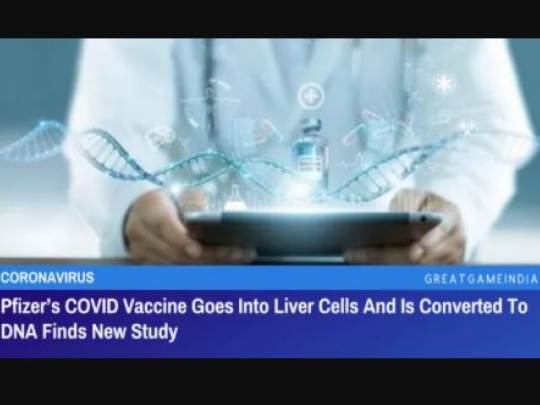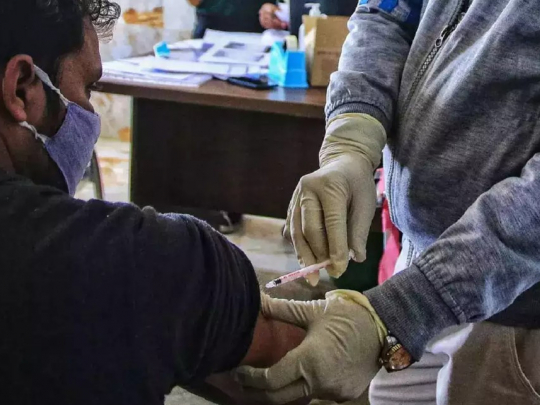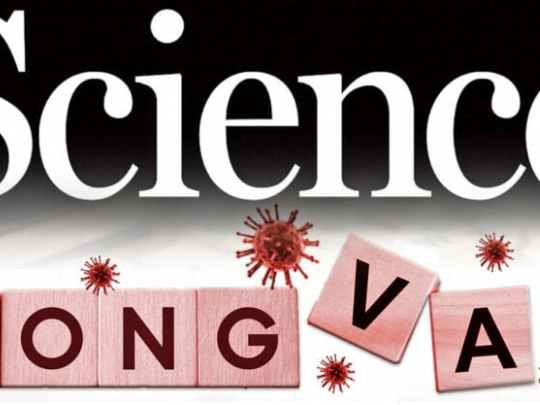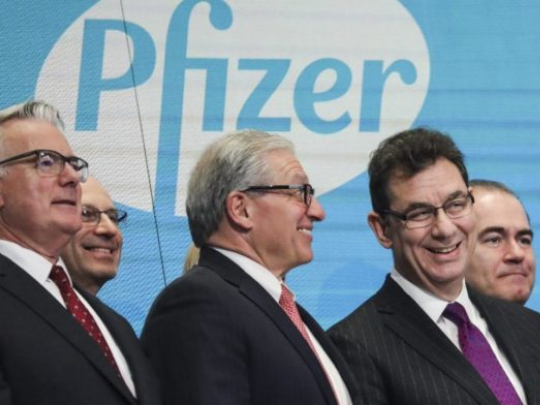Pfizer’s COVID Vaccine Goes Into Liver Cells And Is Converted To DNA Finds New Study

The research results of the Swedish study which proves that Pfizer’s COVID vaccine goes into the liver cells and is converted into DNA could have enormous implications of permanent chromosomal change.
According to Swedish scientists at Lund University, the messenger RNA (mRNA) from Pfizer’s COVID-19 vaccine can penetrate human liver cells and be transcribed to DNA.
The researchers discovered that when the mRNA vaccine reaches human liver cells, it causes the cell’s DNA, which is located within the nucleus, to enhance the creation of LINE-1 gene expression, which results in the production of mRNA.
The mRNA then exits the nucleus and travels to the cytoplasm, where it is translated into the protein LINE-1. The open reading frame-1, or ORF-1, part of the protein then returns to the nucleus, where it binds to the vaccine’s mRNA and reverse transcribes into spike DNA.
When DNA is generated from RNA, it is called reverse transcription, while normal transcription uses a part of the DNA as a template to create an mRNA molecule inside of the nucleus.
“In this study (read the study below) we present evidence that COVID-19 mRNA vaccine BNT162b2 is able to enter the human liver cell line Huh7 in vitro,” the researchers wrote in the study, published in Current Issues of Molecular Biology. “BNT162b2 mRNA is reverse transcribed intracellularly into DNA as fast as 6 [hours] after BNT162b2 exposure.”
The Pfizer-BioNTech COVID-19 vaccine, promoted underneath the brand name Comirnaty, is also known as BNT162b2.
In under six hours, the entire procedure was completed. The Centers for Disease Control and Prevention (CDC) stated that the vaccine’s mRNA wouldn’t really convert to DNA and be located within the cell’s nucleus.
“The genetic material delivered by mRNA vaccines never enters the nucleus of your cells,” the CDC said on its web page titled “Myths and Facts about COVID-19 Vaccines.”
It’s the first time scientists have demonstrated how an mRNA vaccination is turned into DNA on a human liver cell line in vitro or in a petri dish, and it’s something medical authorities and fact-checkers have said couldn’t happen for over a year.
The CDC claims that “COVID-19 vaccines do not change or interact with your DNA in any way,” and that all chemicals in both mRNA and viral vector COVID-19 vaccines (given in the US) are eliminated from the body after antibodies are created. These vaccines carry genetic material that directs cells to start producing spike proteins located on the surface of SARS-CoV-2, which trigger an immune response to COVID-19.
Pfizer declined to elaborate on the Swedish study’s conclusions, stating merely that their mRNA vaccination has no effect on the human genome.
“Our COVID-19 vaccine does not alter the DNA sequence of a human cell,” a Pfizer spokesperson told the media in an email. “It only presents the body with the instructions to build immunity.”
As of Feb. 28, upwards of 215 million Americans, or 64.9 percent, were fully vaccinated, with 94 million receiving a booster shot.

A 3D print of a spike protein of SARS-CoV-2—the virus that causes COVID-19—in front of a 3D print of a SARS-CoV-2 virus particle. (Courtesy of NIAID/RML)
Autoimmune Disorders
Spike proteins articulated on the surface of liver cells were also discovered in the Swedish study, which researchers believe might well be targeted by the immune system and end up causing autoimmune hepatitis, as “there [have] been case reports on individuals who developed autoimmune hepatitis after BNT162b2 vaccination.”
Because “severe cases of SARS-CoV-2 infection are characterized by an autoinflammatory dysregulation that contributes to tissue damage,” the authors of the very first documented incident of a healthy 35-year-old female who formed autoimmune hepatitis within a week of her first dose of the Pfizer COVID-19 vaccine said there is a possibility that “spike-directed antibodies induced by vaccination may also trigger autoimmune conditions in predisposed individuals,” which appears to be caused by the virus’s spike protein.
After an infection or a COVID-19 vaccination injection, spike proteins may flow in the bloodstream. The vaccine’s spike protein, like several other proteins generated in the body, was expected to stay largely at the injection site and endure for several weeks. However, research reveal that this is not the reality.
The biodistribution investigation (pdf) of the Pfizer vaccination by the Japanese regulatory body revealed that part of the mRNAs travelled from the injection site through the bloodstream and were discovered in organs such as the liver, spleen, adrenal glands, and ovaries 48 hours after injection.
In a separate study, spike proteins produced in the body after acquiring a Pfizer COVID-19 shot were discovered on tiny membrane vesicles known as exosomes, which facilitate cell-to-cell interaction by transporting genetic materials to other cells, for at least four months after the second vaccine dose.
According to experts at Doctors for COVID Ethics, an organization comprised of physicians and scientists “seeking to uphold medical ethics, patient safety, and human rights in response to COVID-19,” the persistence of the spike protein in the body “raises the prospect of sustained inflammation within and damage to organs which express the spike protein.”
“As long as the spike protein can be detected on cell-derived membrane vesicles, the immune system will be attacking the cells that release these vesicles,” they said.
The research results of the Swedish study have “enormous implications of permanent chromosomal change and long-term constitutive spike synthesis driving the pathogenesis of a whole new genre of chronic disease,” according to Dr. Peter McCullough, an internist, cardiologist, and epidemiologist, who wrote on Twitter.
Side-by-side important reports reverse transcription, nuclear DNA code for Spike, both significant discoveries. Enormous implications of permanent chromosomal change and long-term constitutive Spike synthesis driving the pathogenesis of a whole new genre of chronic diseases. pic.twitter.com/oCj4BdzNEE
— Peter McCullough, MD MPH (@P_McCulloughMD) February 28, 2022
It’s unclear whether the study’s findings will be replicated in living beings or whether the DNA synthesized from the vaccine’s mRNA will merge with the cell’s genome. To properly understand the possible consequences of the mRNA vaccination, the authors say more research is needed, especially in complete live species like animals.
“At this stage, we do not know if DNA reverse transcribed from BNT162b2 is integrated into the cell genome. Further studies are needed to demonstrate the effect of BNT162b2 on genomic integrity, including whole genome sequencing of cells exposed to BNT162b2, as well as tissues from human subjects who received BNT162b2 vaccination,” the authors said.
- Source : GreatGameIndia


















